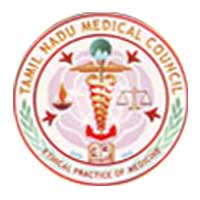Facial Rejuvenation
Facial aging is a complex process involving a combination of factors. Over time, the skin undergoes many alterations including loss of elasticity and subcutaneous fat as well as fat redistribution caused by gravitational forces. Additionally, skin aging is accelerated by environmental influences such as sun exposure, smoking, and nutritional factors.
The combined effect of these physiologic and environmental factors is the visible appearance of wrinkles and folds, development of an increasing number of lentigines, and loss of overall skin luster. Photo aged skin creates the appearance of age beyond years, and a tired, dull appearance.
Facial rejuvenation procedures include cream programmes, skin polishing (Micro Dermaberasion), botulinum toxin injections (Botox, Neuronox), volume enhancers (Fillers), lasers, chemical peels and meso injections.
Photo rejuvenation Photo rejuvenation is the utilization of visible or infrared light energy sources to reverse the process of sun-induced or environmental damage to the skin. The primary objective of nonablative rejuvenation is to improve photo aged skin, which includes the appearance of dys-pigmentation, static fine wrinkles, coarse texture, prominent pores, telangiectasis, and mild skin laxity. A secondary objective includes the recontouring of surface irregularities, such as scars, via subsequent dermal collagen remodeling.
Botulinum Toxin ( Botox/ Neuronox) Botulinum toxin (BTX) is the most popular non surgical cosmetic procedure performed around the world. Aging causes wrinkles to appear on the face. Wrinkles could be static (Seen at rest) or Dynamic (appear only on facial animation). Dynamic wrinkles are eliminated using microinjections of Botulinum toxins. The procedure could be completed within half an hour. Clients could resume their social activity immediately.
Fillers Static Wrinkles and grooves that appear on the face could be eliminated by injecting filler materials. Commonly used filler material is Hyaluronic acid. Hyaluronic acid is a naturally occurring linear polysaccharide and is a component of the extracellular matrix of connective tissues. The average hyaluronic acid filler usually lasts 6 to 8 months. Filler injections are administered under local anaesthetic blocks. Clients could complete the procedure within half an hour and resume their social activity immediately.
Chemical Peels Chemical peels are an inexpensive effective way to tackle several cosmetic skin concerns including uneven pigmentation, acne, aging skin, under eye dark circles and also to provide a glow to your face. A chemical peel removes the superficial layers of the skin resulting in improved tone and texture of the skin. It can reduce spots on the face and even out textural irregularities on the skin. Chemical peels are most often classified by the depth of injury they induce. The chosen peel should match the patient's degree of photo aging and tolerance for post-procedure downtime. They include superficial peel, mid depth peel and deep peel.
Superficial chemical peels (Glycolic peel/ Lactic Peel/ Salicylic peel/ Combination peels) Individual superficial chemical peels rarely produce significant results, and a series of 4 to 6 peels is usually required to achieve optimal outcomes. Superficial peels have the advantage of minimal downtime and a favorable side effect profile
Mid Level Peels (TCA Peels and Combination Peels) Mid level peels are targeted at removing severe pigmentary abnormalities and superficial scars. The peeling effect starts after 48 hours and last for 3 to 4 days. Deep level Peels include phenolic peels which are not suitable for Asian skin. Chemical peels are services which do not take more than 15 minutes of one's time and they can be conveniently done at any time and can also be squeezed in as a lunch time service.
KEY POINTS










